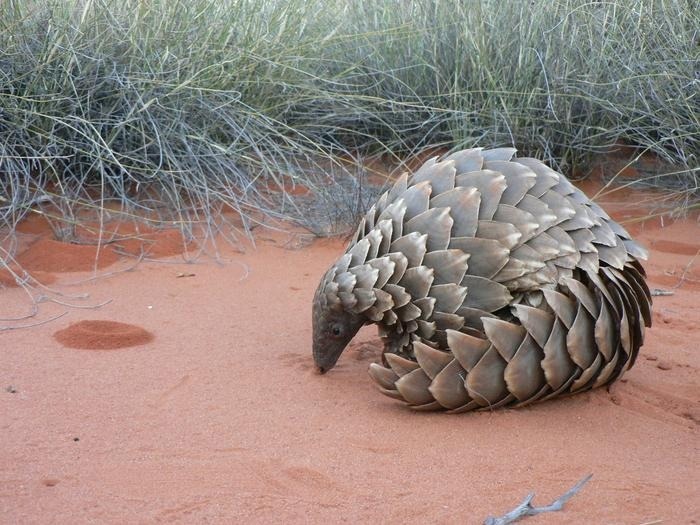Reviewed by Danielle Ellis, B.Sc.Oct 6 2023
A new research paper, published in Molecular Biology and Evolution by Oxford University Press, has introduced an extensive collection of genomic resources for pangolins, commonly known as scaly anteaters. Researchers anticipate that these resources will play a vital role in safeguarding these endangered mammals.
 Pangolin. Image Credit: Darren Pietersen/ Molecular Biology and Evolution.
Pangolin. Image Credit: Darren Pietersen/ Molecular Biology and Evolution.
Pangolins, unique for being the only mammals covered in scales, are native to Asia and sub-Saharan Africa. They face the dire threat of trafficking for their meat and purported medicinal properties, as well as habitat loss due to widespread deforestation.
With eight surviving species, pangolins have gained significant attention in recent years, primarily due to being the most trafficked wild mammals globally and, although incorrectly, being associated with the COVID-19 pandemic.
Despite the critical conservation status of pangolins, they remain understudied, with significant gaps in fundamental research on their species and populations. In response, researchers are increasingly turning their attention to genomics as a valuable tool in wildlife research.
Genomics provides crucial data for more precise insights into species and population boundaries, demographic characteristics, genetic diversity, historical trends, and the ability of animals to adapt to environmental changes. Additionally, genomics holds the potential to trace the origins of illegally traded pangolins, aiding in the identification of poaching hotspots and the disruption of trafficking networks.
Generating genome-wide data for pangolins presents significant challenges. Firstly, the geographic isolation of various pangolin species and the scarcity of fossil records create methodological hurdles.
The Asian and African pangolin species diverged approximately 37.9 million years ago, making it challenging to gain a comprehensive understanding of the group's evolution when using a reference genome from a distant species. Secondly, the elusive nature of pangolins and their presence in tropical regions make genetic sampling a costly and time-consuming endeavor.
In this study, researchers successfully sequenced, assembled, and annotated the inaugural reference genome for the giant pangolin, a species native to Africa. Furthermore, they sequenced and assembled genomes for several other pangolin species, including the black-bellied, Temminck's, Indian, and Philippine pangolins.
These newly generated genomic datasets, combined with previously published information on the remaining three species—white-bellied, Sunda, and Chinese pangolins—comprise the first comprehensive set of genomes for all pangolin species. Remarkably, during this process, the researchers also identified the potential existence of a previously unknown pangolin species from previously released genomic data.
The wealth of information generated by this research, which offers insights into the evolutionary history of pangolins in response to shifting environmental conditions, is expected to play a pivotal role in developing effective conservation strategies and management plans for these animals in the future.
Additionally, the findings will be invaluable for creating DNA toolkits that can aid in tracking and combating the pangolin trade, contributing to efforts aimed at protecting these unique and endangered creatures.
“The collaborative manner of this study from authors spanning Africa, Asia, and Europe allowed us for the first time to have a deep look into pangolin evolution across all eight species using a genome-wide lens. We hope that these genomes will be the basis for further genetic research that will aid in conservation of the animals,” states Sean Heighton, one of the paper’s authors.
Source:
Journal reference:
Heighton, S. P., et al. (2023). Pangolin Genomes Offer Key Insights and Resources for the World’s Most Trafficked Wild Mammals. Molecular Biology and Evolution. doi.org/10.1093/molbev/msad190.